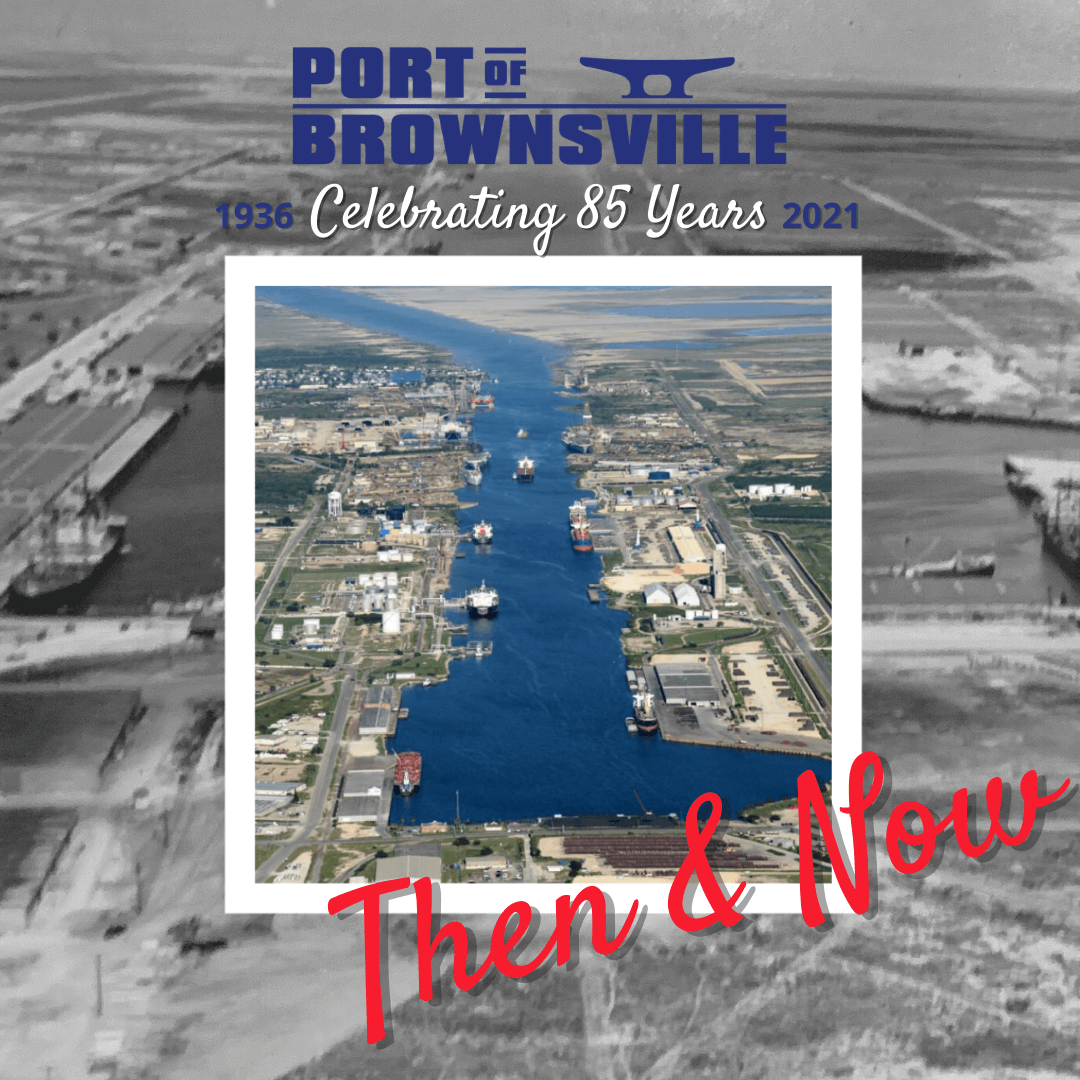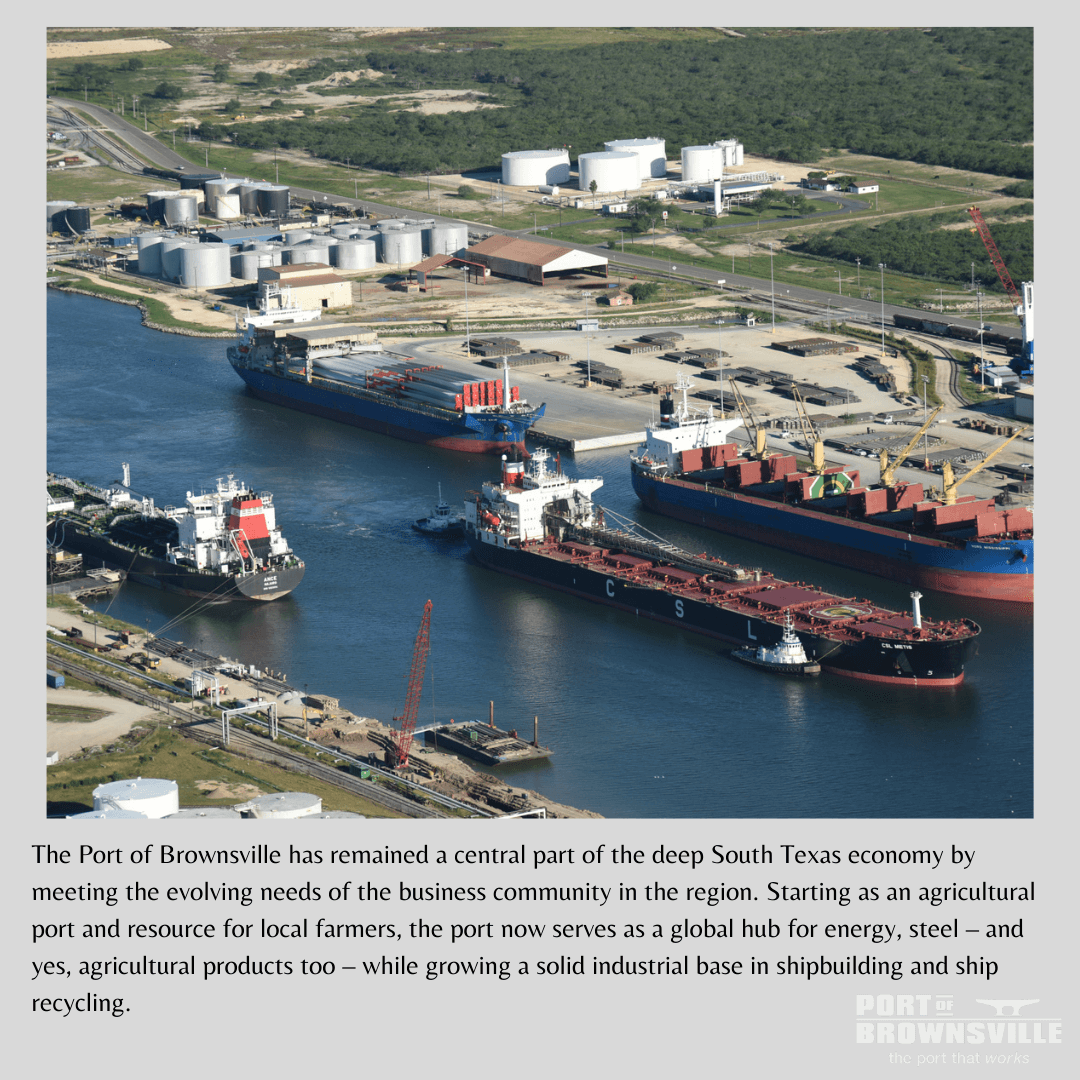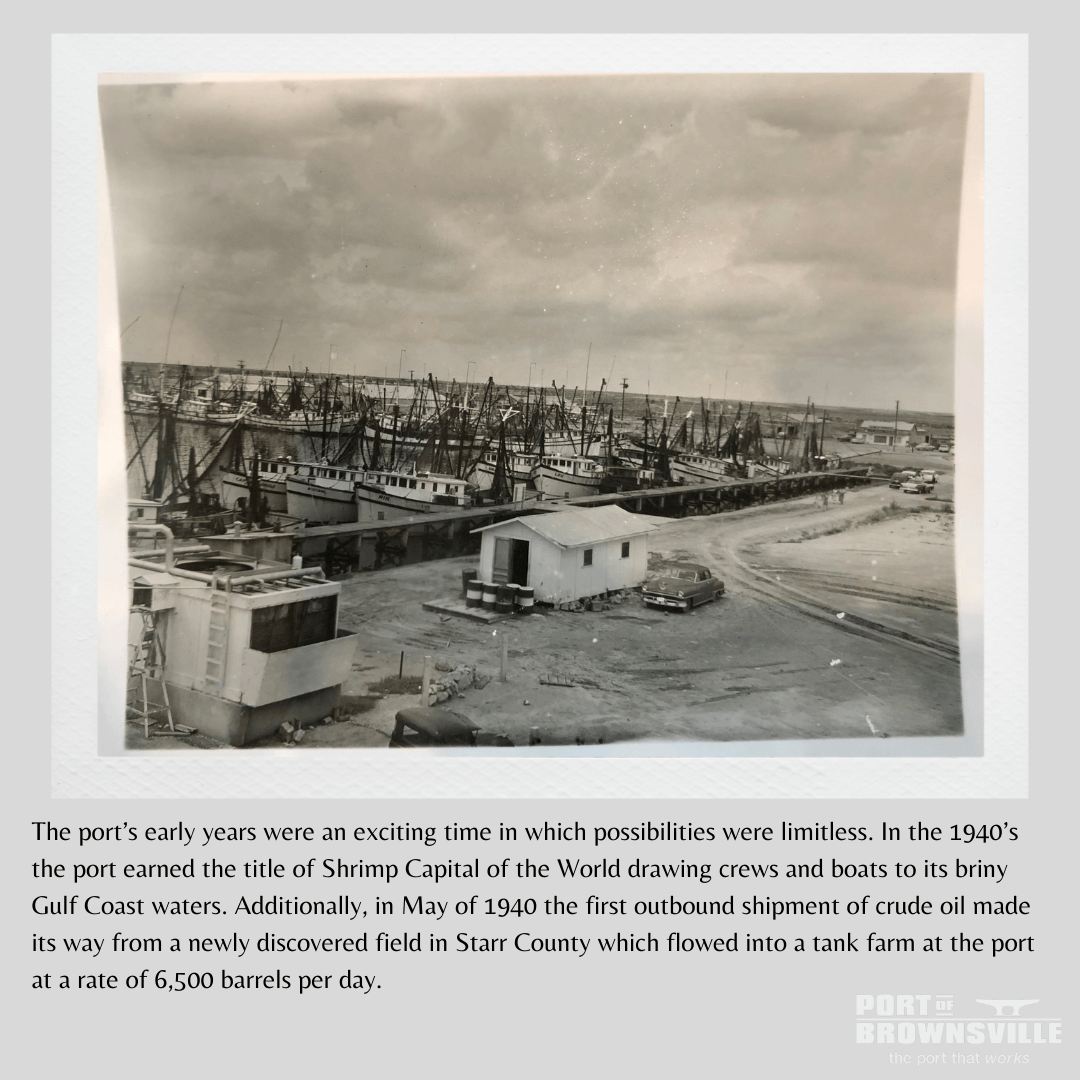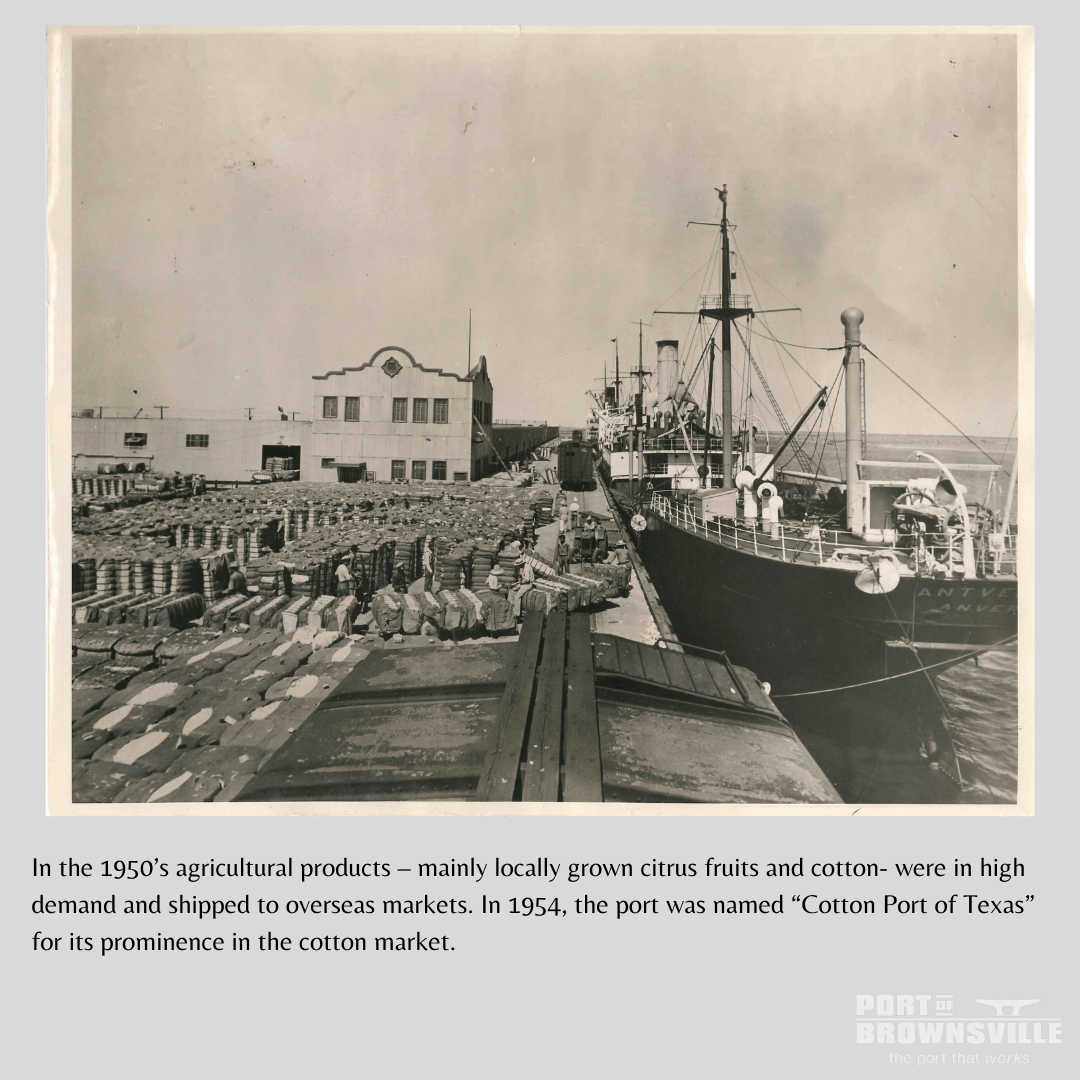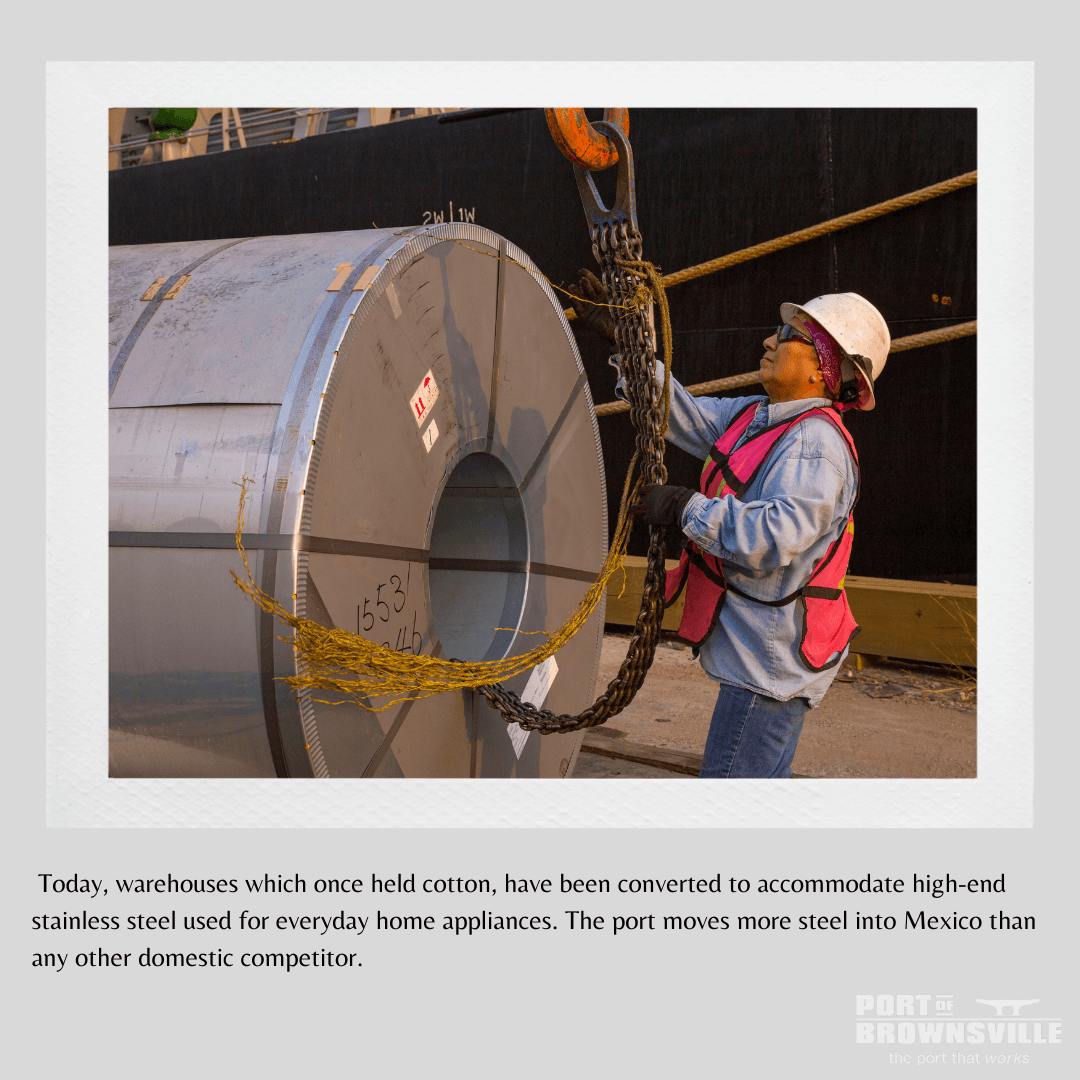BY STEVE CLARK / The Brownsville Herald
Article published Thursday, January 28, 2021
A persistent shortage of truck drivers in the United States has helped pry open a window of opportunity for the Port of Brownsville in the form of container-on barge shipping.
The port has tried it before, more than a decade ago with a Florida company called Seabridge Freight Inc., which operated a tug barge line between Brownsville and Port Manatee, Fla., though in the end it didn’t work out. This time around, it’s a different story. Work Cat Trans Gulf LLC, also based in Florida, has been running a weekly short-sea shipping operation between Brownsville and Port Tampa Bay since mid-August consisting entirely of 53-foot shipping containers.
Work Cat is currently running two tug-drawn barges between the two ports, each barge capable of holding 274 of the so called “high cube” containers. That’s according to Rick Sharp, vice president of operations for Online Transportation International, who’s essentially running the operation on both sides of the Gulf. Hugging the Gulf coast, the barges move 110 to 130 loads a week, a one-way trip taking four days, he said. Sharp was interviewed at the Port of Brownsville’s Dock 10 on Jan. 21, a stack of containers towering overhead and a huge crane loading the last containers aboard the 17th eastbound barge since the service began.
“We’re dealing with a lot of cargo that originates in Mexico, and it crosses either at Laredo or Reynosa or Matamoros: appliances, beverages, cleaning supplies — a lot of variable commodities,” he said.
Before, 100 percent of those goods were transported to the Southeast by 18-wheeler, though with higher demand for trucks and fewer drivers to drive them, shipping via barge with plus-size containers provides an attractive, cost-effective option to get product from the Rio Grande Valley region to the Southeast and from there to the Midwest, Sharp said.
“That extra six inches enables them to really cube it out, therefore they’re putting more product in the container, so it’s lowering their overall cost,” he said.
One barge load equals 125 truckloads, which means fewer emissions, Sharp noted. The goal is to sign up enough customers to necessitate a third barge, though too many potential clients don’t know the service exists yet, he said.
“The capacity is out there,” Sharp said. “Our challenge is to get the word out to… even the local companies here, a lot of the warehousing here in Brownsville and Laredo. There’s so much warehouse space. Trying to find those customers that are using trucks that are originating in Mexico or this surrounding area, ultimately going to Florida or the Southeast, there’s a tremendous opportunity for savings.”
Brownsville is the logical link because of its proximity to Matamoros, Reynosa and Laredo, he said.
“This has been in development for several years,” Sharp said. “Work Cat, they’ve been talking to the Port of Brownsville for a few years now, talking to me for a few years in Tampa, and trying to put all this together.”
Good partnerships brought the whole thing to life, he said.
“We have some really good partners, the Port of Brownsville being number one,” Sharp said. “Schaefer Stevedoring is a partner of ours. Louisiana Towing is the tug company that actually pulls the barges, and Trailer Bridge is the owner of the barges themselves. Without all those entities together, we would never have gotten to where we are right now. It’s a partnership with multiple companies. All of us have the same mentality. It’s just to try to get the product from point A to point B in a safe way, number one, and a cost effective way.”
For now the barges carry cargo eastbound only, though he hopes to change that and get business coming and going.
“They’re currently coming back empty, but we’re looking for freight coming west for sure,” Sharp said.
As for the driver shortage bedeviling the trucking industry over the last 15 years or so, it’s due largely to the relatively high average age of the workforce, according to the trade group American Trucking Associations. To make matters worse, the pandemic has slowed down training, testing and licensing of new drivers, which makes it a good time to be in the container-on-barge business.
Port Director and CEO Eduardo Campirano said the new service appears to be working well, that it offers the port’s customers more options and that he’d love to see it expand.
“They’re out there chasing business, and this can grow,” he said. “It’s a good service offering for our customers and it seems some of them are taking advantage of it. Others will too.”
Campirano said he thinks the current service is succeeding where the Port Manatee experiment did not in part because the Brownsville-Tampa Bay line is on a regular, weekly schedule, and that the companies behind the new venture have more going for them in terms of container capacity and equipment.
“The previous service sometimes didn’t always work on schedule,” he said. “From that experience we kind of learned if you’re going to offer a service it really needs to be on a regular schedule, so the customer knows what to expect. … We’re taking advantage of what we learned last time.”



